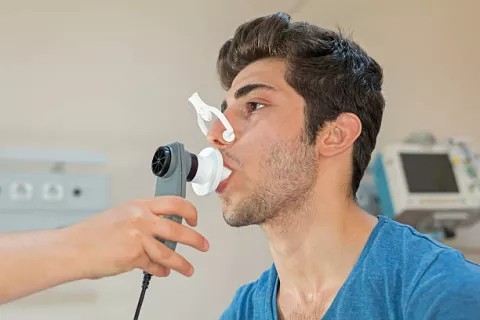Exposure to dichlorophenol and parabens, individually or in combination, is significantly associated with reduced lung function in adults. A cross-sectional study using data from the 2007 to 2012 National Health and Nutrition Examination Survey (NHANES) confirmed this.
The objective was to evaluate how single and mixed exposures to these chemicals affect lung function. A total of 2,599 adults with complete urinary and spirometry data were included. Urinary levels of 2,5-dichlorophenol (2,5-DCP), 2,4-dichlorophenol (2,4-DCP), methylparaben, and propylparaben showed detection rates exceeding 75%. Lung function was assessed using forced vital capacity (FVC) and forced expiratory volume in 1 second (FEV1). Three models were used to evaluate the impact: generalized linear regression (GLM), weighted quantile sum (WQS) regression, and Bayesian kernel machine regression (BKMR).
In GLM analyses, 2,5-DCP showed a significant negative association with lung function. As a continuous variable, 2,5-DCP correlated with reduced FVC (β = −0.012; 95% CI: −0.018, −0.006) and FEV1 (β = −0.010; 95% CI: −0.017, −0.004). When evaluated by quartile, the decline in lung function remained significant: FVC (β = −0.027; 95% CI: −0.039, −0.016) and FEV1 (β = −0.024; 95% CI: −0.036, −0.011). The WQS regression model confirmed the combined negative impact of these chemicals on pulmonary health, showing consistent associations with reduced FVC (β = −0.013; 95% CI: −0.018, −0.008) and FEV1 (β = −0.013; 95% CI: −0.017, −0.007).
BKMR models confirmed the link between urinary chemical levels and reduced lung function. The consistent patterns observed increase confidence in the outcomes. The study shows that high urinary levels of dichlorophenol and parabens are associated with significant declines in FVC and FEV1.

